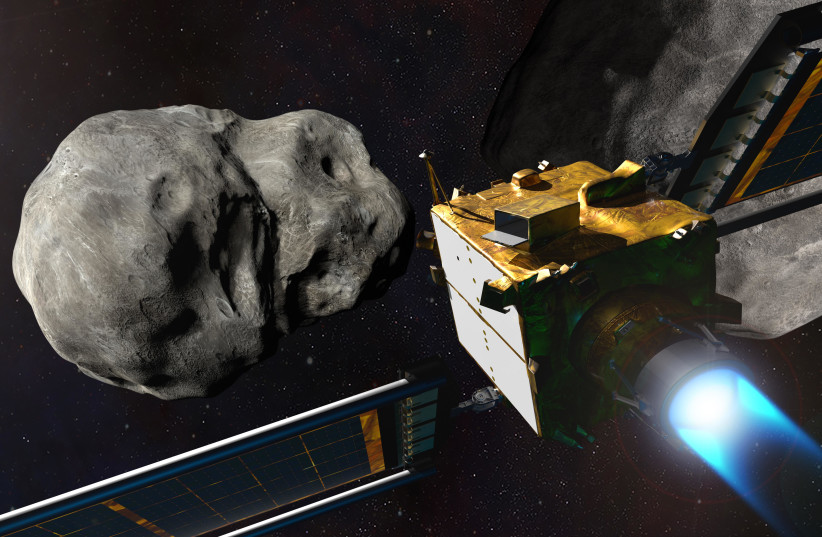An asteroid the size of over 23 Borzoi dogs is set to pass by the Earth on Saturday, according to NASA's asteroid tracker.
The asteroid in question was only discovered this year and was been designated 2023 EZ, according to the Center for Near-Earth Object Studies (CNEOS) at NASA's Jet Propulsion Laboratory (JPL).
And for those asking in advance, the metric used is the total length of the borzoi dog from tail to snout, not a specific part of the its body or its height.
Let me do it for you: How big is the asteroid coming toward Earth in 2023?
Asteroid 2023 is on the smaller side, with NASA estimates placing its diameter as being, at most, just 34 meters.
Now that still is considerably larger than a person, but just how much? Well, here is a more relatable comparison.

Consider the borzoi dog, which has gained considerable popularity recently due to the widespread "let me do it for you" meme that highlights the dog's exceptionally long snout.
These Russian hunting dogs can grow very long, with one notable borzoi, Eris, reportedly growing to be as long as 1.4478 meters (or 4 feet, 9 inches for Americans) from tail to snout, with the snout alone being nearly 31 centimeters (12.2 inches, or just over a foot long), according to a report from British news outlet Metro in 2020.
With that in mind, asteroid 2023 EZ's diameter is just a bit longer than the length of 23 borzois like Eris standing tail to snout in a line.
In terms of weight, male borzois can weigh up to 47 kilograms, but that's nothing compared to what asteroid 2023 EZ likely weighs.
The word "borzoi" may literally translate to "fast" in Russian, which shows in that despite being so large, it can run at speeds of over 56 kilometers per hour.
But asteroid 2023 EZ is much faster - if it were a race, EZ would win, easy. This makes sense, since it's barreling this way at a speed of 23,760 kilometers per hour.
Is an asteroid going to hit Earth in 2023?
Are you wondering if asteroid 2023 EZ is going to hit the Earth this year? Well, to quote the famous borzoi meme, "let me do it for you" and answer this question:
No.
By NASA JPL's estimates, asteroid 2023 EZ will fly some 6 million kilometers away from the Earth.
Yes, on a cosmic scale that's pretty close. But it's nothing to worry about - the Moon is much closer, orbiting at around 384,000 kilometers away, and NASA's James Webb Space Telescope is even farther away.
And even if it did hit the Earth, the most that would likely happen is that it would explode in the atmosphere with a very loud and worrying bang, perhaps shattering windows as a result, but unless it actually falls on someone, it's unlikely to do any damage.
This is usually what happens when smaller asteroids end up impacting the Earth - they simply explode in the atmosphere and result in little to no damage.
For example, look at some of the recent asteroid impacts.
In March 2022, asteroid 2022 EB5, half the size of a giraffe, impacted the Earth and caused no damage.
The same thing happened when asteroid 2022 WJ1 harmlessly exploded around Lake Ontario in late November 2022.
There are more recent examples from 2023, like in February when asteroid 2023 CX1, twice the size of a Super Bowl trophy, impacted the Earth near Normandy, France, and caused no damage.
Just a few days later, a meteor the size of a Pembroke Welsh Corgi and weighing as much as four baby elephants actually managed to impact the Earth in Texas. It also caused no damage.
In short, asteroid impacts can and will happen, but most of them tend to cause little to no damage. But having said that, big asteroids can still impact the Earth too - and that's something to worry about.

Do we have any way to stop an asteroid from hitting the Earth?
Thankfully, scientists planetary defense have been working on this. Thus far, the most notable and promising effort is NASA's Double Asteroid Redirection Test (DART) Mission, which was launched to crash into the asteroid Dimorphous to see if its trajectory would be altered.
They essentially just used a spacecraft to punch an asteroid to make it move, changing its orbital trajectory. And it worked.
This was reaffirmed by a recent study. In fact, scientists are now certain they could prevent an impact from a dangerous asteroid, provided we have a few years' notice.
So here's hoping more advances in asteroid detection and prevention are made.
